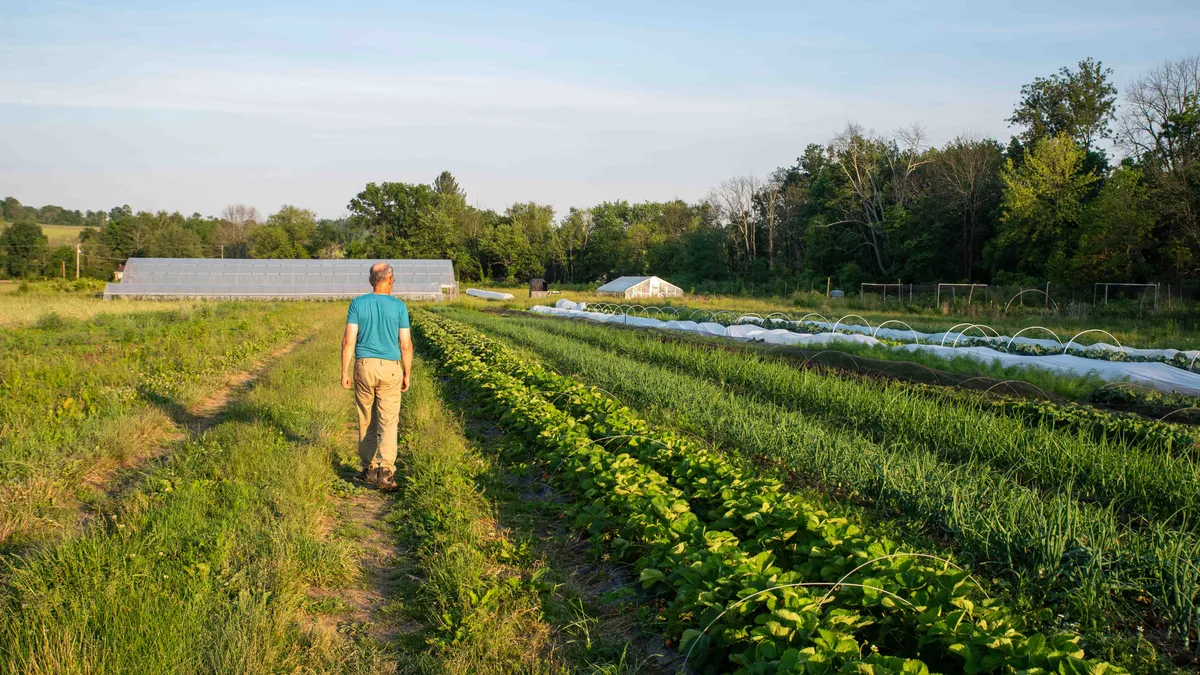After intense negotiations, states along the Colorado River reached a groundbreaking agreement earlier this year to reduce water consumption by 3 million acre-feet over the next three years. As part of the deal, farmers — who use more than 80% of the river's water — will be paid not to farm.
The plan seeks to reduce the states’ collective water usage through financial incentives for three years. Once it ends in 2026, officials will be having conversations about how to continue water conservation efforts.
For some farmers in the West, the deal is an affront to their livelihoods and comes following a long history of tensions with the federal government over its approach to land management and conservation. But for others, it represents a substantial new source of income in an industry where margins are tight.
To farm or not to farm?
Around 2.3 million acre-feet in planned conservation savings will be compensated through funding from the Inflation Reduction Act. The deal is offering various amounts of money, but the most common price is $400 per acre-foot of water saved.
"Although some farmers would like more, there are many farmers that think it’s a pretty good deal,” said Robert Glennon, a water policy expert at the University of Arizona law school. “It all depends on the situation of the individual farmer for what else they are growing.”
Farm operations with substantial land and water rights are already looking for ways to cash in on fallowing, a technique where agricultural land is taken out of production to let it recover. One of those companies is Limoneira, one of the largest lemon producers in North America.
In a September conference call, President and CEO Harold Edward said the company expects to receive $1.3 million annually paid in quarterly installments for fallowing 581 of its 1,300 acres in Yuma, Arizona.

“We are finding great monetization opportunities for our water assets by either fallowing acreage, leasing pumping rights, or selling the water rights for significant appreciation over our investments,” Edward said. “We believe this water monetization in Yuma, Arizona, is just the beginning of additional future opportunities for our abundant water assets.”
New opportunities for government payments are pushing the citrus producer to rethink parts of its growth strategy, which had involved selling off assets to generate cash in light of lower food prices and high production costs.
"Fundamentally, we believe that our land and water assets will continue to go up," Edward said, noting plans for Limoneira to potentially lease water to farmers or communities in times of worsening drought. "So owning those long term, I think, is the smart thing for us to do."
Other farmers, however, remain fiercely opposed to fallowing and believe they should be compensated at far higher levels to take their land out of production.
A coalition of farmers and agribusiness leaders, called Save the River, initially asked for $1,500 per acre-foot to help cover increased costs of producing crops and to avoid a destructive food shortage.
Members explained that it would allow them to avoid a national food crisis, maximize participation, pay for technology improvements, keep employees and stabilize agriculture dependent communities.
Although farmers remain worried about the water cuts' impact on their way of life, they may have no other choice but to reduce consumption as the river continues to dry up due to rapid evaporation and from climate change.
“When the government comes crawling for your water, you get afraid. If you don’t have the water, then you don’t have a livelihood,” Glennon said. “That being said, farmers consume 80% of the West's water and I think farmers in the future are going to use less water. The question is how do they get there?”
Bracing for 2026
Overall, officials want to address the drought crisis on a long term basis through upgrading old infrastructure and encouraging farmers to transition to climate-smart production practices. The Biden administration announced new investments that would help improve and protect the sustainability of the Colorado River system.
Unless states drastically cut back on their water usage, there could be dramatic impacts including to Lake Mead, which supplies water for approximately 25 million people in California, Arizona, Nevada and Mexico.
In the summer of 2022, Lake Mead reached its lowest point in history, with levels just feet away from "dead pool" status, at which point water can't flow downstream and through the Hoover Dam. If that were to happen, farmers in the major Imperial Valley growing region would be without water entirely.

Farmers in the Imperial Valley have the single largest water allocation from the river, more than Arizona and Nevada combined. They've remained among the most resistant to plans that involve taking farmland out of production.
However, they may not have much of a choice. The Imperial Irrigation District has proposed cutting 750,000 acre-feet a year until 2026, with 250,000 acre-feet contingent on additional funding from the Bureau of Reclamation.
While the district is developing programs to avoid fallowing and encouraging farmers to voluntarily cut water, more action will be necessary to slash water use.
“This is a very large volume of new conservation, so it is much more complicated,” said Robert Schettler, public information officer for the Imperial Irrigation District. “Although we remain fundamentally opposed to fallowing, it may be necessary to meet the commitment obligations.”
An unusually wet winter dramatically eased drought concerns for the short-term, allowing state officials to secure enough money to cover the cost of paying farmers. But the Colorado River remains at serious risk of drying up, and officials will need to strike a new agreement when the current deal expires in 2026.
“The wet year and the Biden money have saved a lot of really tough discussions," Glennon said. "But the discussions going forward will still be tough."


















